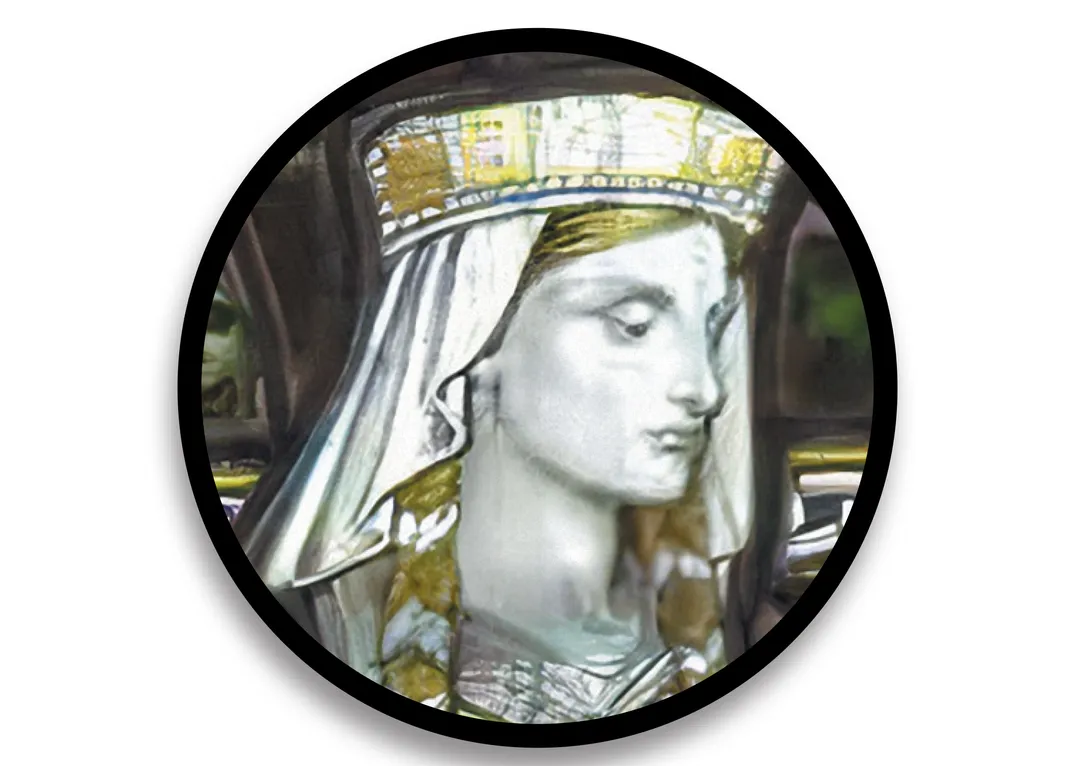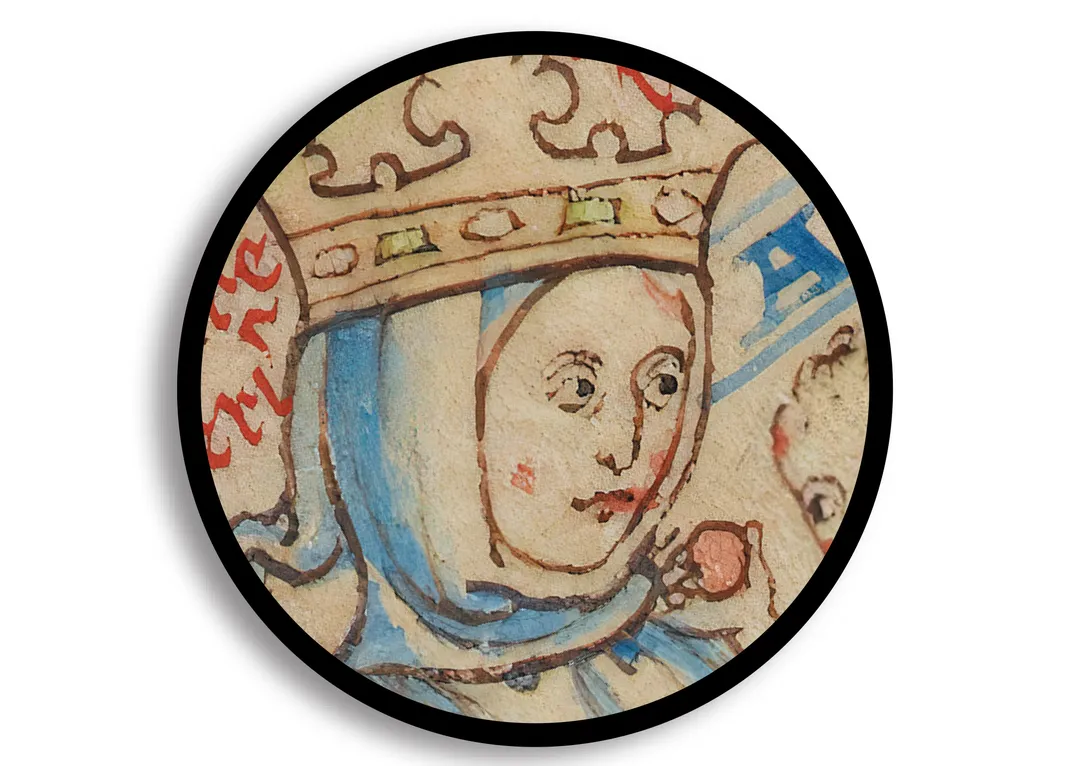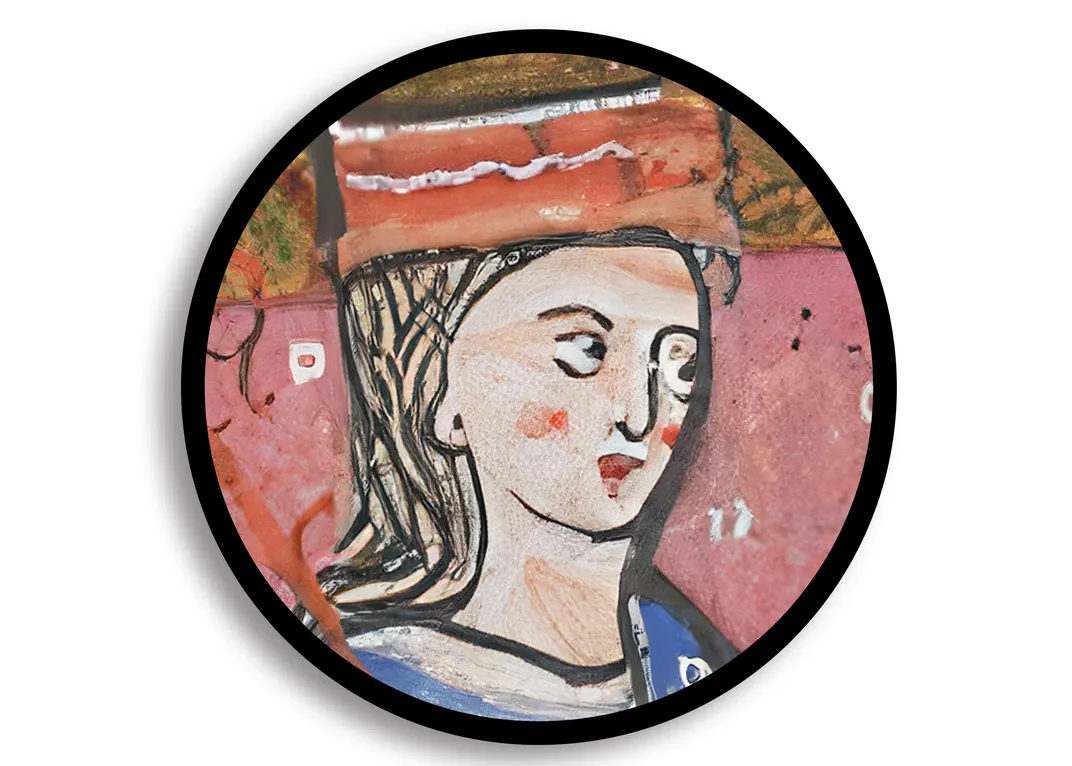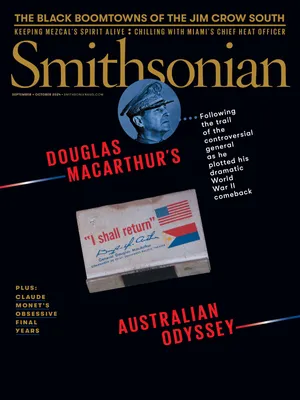Archaeologists Uncover the Real Story of How England Became England
New research is revealing how the Sceptered Isle transformed from a Roman backwater to a mighty country of its own
:focal(922x615:923x616)/https://tf-cmsv2-smithsonianmag-media.s3.amazonaws.com/filer_public/c7/e2/c7e2d0ca-8dd1-461e-a4d4-7abd693e6695/sepoct2024_l08_prologue.jpg)
The soldiers arrived in “three ships of war, with their sails wafted by the wind and with omens and prophecies … that they should occupy the country to which they were sailing three hundred years, and half of that time … should plunder and despoil the same.” So wrote Gildas, a sixth-century British monk, describing the Germanic conquest of Britain shortly after the end of Roman rule. His account of this bloody war endured, as did the belief that the conflict had elevated a Germanic upper class, who oppressed the natives for generations afterward. These beliefs stood as a hallmark of British identity for centuries.
But did that invasion actually happen? Since the Renaissance, scholars have been engaged in a curious and feverish debate over where the people who populate England came from. Did they arrive as conquerors, as Gildas would have it? Or by a more gradual and peaceful migration? The answer matters because it provides an explanation for a perplexing reality: In a remarkably short three centuries after the Roman occupation, Britain was transformed into a dramatically different kind of place.
Under Roman administration, Britain was largely urban. People lived in tile-roofed stone buildings in towns connected by roads; they boasted a standing army and a coinage system. Native Britons spoke an indigenous Celtic language and probably some Latin. By the 700s, things had changed entirely: Inhabitants lived mostly in country hamlets in wood-and-thatch homes resembling Grubenhäuser, those partly sunken houses typical of northern Germany and southwest Denmark. With the empire gone, many workers, from builders to vintners to smiths to perfumers, simply no longer had a market for their products or services, so the only way to survive was subsistence farming. In this way, the Britons produced what they needed, and they bartered for the rest. The things they made, jewelry or pots, drew on both continental and indigenous traditions but were uniquely theirs. Most striking, they had created a new national identity and were speaking a new language, the earliest form of English.
/https://tf-cmsv2-smithsonianmag-media.s3.amazonaws.com/filer_public/11/8f/118f35ca-0f2f-43ab-965d-f0b52381fd29/sepoct2024_l17_prologue.jpg)
/https://tf-cmsv2-smithsonianmag-media.s3.amazonaws.com/filer_public/d0/b3/d0b39cda-75b0-4279-ac38-381d306e439b/untitled-1.jpg)
But exactly how was the Roman Britain of 400 transfigured into the radically different country we now call England—all in less than 300 years? Recent scholarship presents an intriguing, and persuasive, case for the migration hypothesis. Analyzing DNA from hundreds of Anglo-Saxon-era bones in England and in northwest Europe, a paper in the journal Nature has concluded that as much as 76 percent of ancestry in eastern medieval England came from what is now Germany and Scandinavia. Meanwhile, archaeologists continue to uncover artifacts in Anglo-Saxon cemeteries that arguably weigh heavily against the theory of origin-by-conquest; indeed, no graves suggesting wealth have been linked to any purely Germanic settlers. The findings suggest something rather remarkable: that some of the most precipitous shifts in social and material culture can come not from war but from peace.
For decades, historians and archaeologists wished it were possible to perform DNA analysis on ancient skeletons. Finally, in the early 2010s, a breakthrough in next-generation sequencing allowed scientists to identify and analyze even the tiniest fragment of ancient human DNA. In the years immediately thereafter, it also became much more cost-effective for most labs to sequence ancient DNA, as long as the samples were extracted from bone at an advanced technology center.
Scientists rushed to find answers to previously shrouded genetic mysteries. In 2012, Stephan Schiffels was a newly minted postdoc in theoretical physics when he arrived at the Wellcome Sanger Institute near Cambridge, England, a major hub for genomics. He was intent on trying out the latest technology—but first he had to find some ancient bones. Oddly enough, he soon heard about some Anglo-Saxon-era skeletons that crews constructing a new campus building had accidentally unearthed. He still marvels at the discovery: “Ancient DNA is a rare game, and there were five bodies found on the grounds where we worked every day!”
In search of an archaeologist partner, he quickly tracked down University of Central Lancashire’s Duncan Sayer, who offered five additional skeletons from his ongoing excavations near Cambridge. With help from a variety of collaborators, the two produced a paper in 2016 that provided the first genetic evidence for the migration argument. The pair’s analysis of ten Anglo-Saxon and Iron Age people interred in England showed that a mixing of northwest European migrant and native DNA had taken place over centuries, in successive waves beginning before the Roman Empire and continuing into the Anglo-Saxon age. Afterward, whenever Schiffels presented at conferences, he found scholars ready to share bones with him.
At the Max Planck Institute in Germany, Schiffels forged ahead, aided by his doctoral student, lead author Joscha Gretzinger. By 2022, when they published the landmark Nature study, more than 70 geneticists, archaeologists, historians and others had contributed to the colossal endeavor.
Martin B. Richards, an archaeogeneticist at England’s University of Huddersfield, had spent his career dreaming of solving Britain’s ancestry question. Finally, he had his answer: large-scale migration, primarily from Germanic northwestern Europe. “Think of spending years in the 1990s getting almost nothing or just tiny bits of sequence at most,” Richards says wistfully. “Suddenly we are seeing hundreds of whole genome profiles,” which researchers can now “assemble into an amazingly detailed picture. … Unbelievable!”
If there had been a conquest and a resulting upper class of Germanic warriors, you’d expect to see two distinct genetic pools. Not so. “This paper is paradigm-shifting,” says Oxford archaeologist Helena Hamerow, who reviewed the group’s work for Nature. “Clearly the native Britons were not nearly exterminated and/or driven out,” she adds, “but many must have intermarried with and lived amongst immigrants and their descendants.”
The next step, Sayer says, is equally exciting: “Now we can really begin to explore the impact of migration in transforming the settlements and culture of early medieval Britain.” Perhaps most remarkable, researchers can now paint more nuanced and detailed pictures of individual humans from long ago.
Confirming the ancestry of the people buried in those Anglo-Saxon cemeteries has quickly revolutionized how archaeologists see them. Take Queeny. That’s what Sayer’s team nicknamed the woman they unearthed in 2011 at the Oakington Anglo-Saxon Cemetery, not far from Cambridge. Born in the mid-sixth century, Queeny was buried in full dress and ornamented with a knife and a variety of impressive jewelry. Hers was one of the wealthier graves. Before her DNA was analyzed in 2012, she could easily have been identified as a member of the Germanic upper class, based on her grave goods.
In fact, the Nature authors argue there was never a Germanic upper class. The settlement residents buried at Oakington—as in many Anglo-Saxon cemeteries—are all of intermingled ancestry: They lived together, married and had children. Like most of her neighbors, Queeny was of mixed descent: 36 percent western British and Irish and 64 percent Continental Northern European, according to a DNA analysis completed in 2012. Further, her parents, her in-laws and her husband were very likely each of mixed ancestry. The samples analyzed so far reveal that the Oakington community was 83 percent Continental Northern European and 17 percent western British and Irish. They were all farmers, some more prosperous than others.
And while Queeny’s burial style suggests she ended her life relatively well-off, her bones tell of a harsh existence. She probably tended crops and perhaps cows. When she died, she might have been as young as 25, and her hands and feet show signs of hard labor. Her stained teeth suggest she may have used them for softening leather. Most tragically, she probably died in childbirth: The tiny bones of a fetus are lodged sideways in her pelvic area, unable to pass through the birth canal.
At his university office in Preston, England, Sayer explains how the people of medieval Britain fused cultures to create their own. Gently unfolding a protective cloth, he holds up Queeny’s intricately wrought cruciform brooch. What excites him most is a tiny bit of barely discernible orange in the crevice of a quatrefoil design. “It’s enamel!” he exclaims. “A Roman technology.” The enamel, and the object’s various Scandinavian and native British elements, add up to an artifact that could not exist anywhere but in England, he explains. Native Britons would have learned these techniques from Roman artisans, but the Germanic immigrants would not have known how to make such enamel. Queeny’s brooch thus shows how communities were combining indigenous British, Roman and Scandinavian knowledge to make new, uniquely English objects.
Queeny’s people were also, bit by bit, creating a new language. From his study in Wales, John Hines, a retired archaeologist at Cardiff University, notes the comparatively swift emergence of the earliest forms of English, barely two centuries after the Romans left. One brooch, excavated in the Harford Farm graveyard in Norfolk, England, in the 1990s and dated to about 650, is inscribed with a full sentence. Translated from Old English runes, it reads: Ludda repaired the brooch—a modest beginning for what would become the language of Chaucer and Shakespeare.
Hines says it’s easy to imagine people in the same family speaking bits of the Celtic tongue they’d learned from a grandmother, the Germanic dialect of their spouses or in-laws and other variants from neighbors. They certainly needed to communicate with each other, but Hines believes that they also craved a shared identity—one they achieved, in part, by creating, together, the rudiments of modern English.
The next frontier in medieval archaeology is emerging from pairing DNA with advanced isotope analysis, an approach that will allow scholars to drill down and discern the stories not just of groups but also of individuals across lifetimes and migrations: where they grew up, whether they traveled far from home and how young they might have been when they did so.
/https://tf-cmsv2-smithsonianmag-media.s3.amazonaws.com/filer_public/79/5b/795b1752-6bea-4d23-a384-2db8e9d4c933/sepoct2024_l09_prologue.jpg)
By analyzing a skeleton’s isotopes—versions of an element that share the same number of protons but have different numbers of neutrons—scholars can identify distinctive chemical signatures often formed in bones by drinking water during childhood. In this way, Sam Leggett, a bioarchaeologist at the University of Edinburgh, has been able to answer previously unanswerable questions: Did that man with mostly European ancestry sail across the sea himself, or was he the grandson of a migrant? Were his children born in England or elsewhere? Did girls tend to marry a local fellow or travel great distances to create family alliances?
One young woman unearthed in a cemetery in Kent provides an intriguing case study. DNA analysis showed she had almost 100 percent Continental Northern European ancestry, while isotope analysis revealed that she’d lived in Scandinavia until she was 15 or a bit older. Leggett estimates she died between the ages of 25 and 35. She may have crossed the sea alone; at least, no others in that cemetery share her DNA. “Did she move for marriage?” asks Leggett. “Was she traded?” Some mysteries persist.
/https://tf-cmsv2-smithsonianmag-media.s3.amazonaws.com/filer_public/f2/e4/f2e4fece-4383-44f3-a12c-6b49f99bc866/emerald.jpg)
Slay, Queens!
Though sometimes forgotten, these English matriarchs decisively shaped the course of history
By Eli Wizevich
Bertha of Kent

In 597, around 40 monks landed on the coast of Kent with a large silver crucifix and orders from Pope Gregory I to bring Christianity to England. Without Queen Bertha of Kent, their task would have been much more formidable. The daughter of the Christian king of Paris, Bertha married King Æthelberht of Kent around 580 and convinced her pagan husband to give the missionaries a place to preach in Canterbury, then the capital city of the Kingdom of Kent. Christianity spread rapidly across her realm, and before the year was over, even Æthelberht had converted.
Emma of Normandy

Emma of Normandy was just a teen in 1002 when she crossed the English Channel, married King Æthelred the Unready and became queen of the English. After Æthelred died in 1016 during a failed campaign to repel an invasion by Cnut the Great of Denmark, Emma married Cnut, the island’s new ruler. Eventually becoming queen of England, Denmark and Norway, Emma helped forge a dynasty that stretched across the North Sea. Harthacnut, her son with Cnut, and Edward the Confessor, her first son with Æthelred, served on the throne successively until 1066, the same year Emma’s great-nephew William the Conqueror also crossed the Channel from Normandy—taking the island and changing the world.
Æthelflæd

